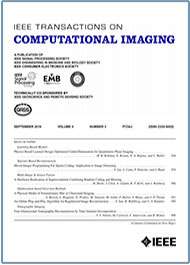A New Nonlinear Sparse Optimization Framework in Ultrasound-Modulated Optical Tomography
Top Reasons to Join SPS Today!
1. IEEE Signal Processing Magazine
2. Signal Processing Digital Library*
3. Inside Signal Processing Newsletter
4. SPS Resource Center
5. Career advancement & recognition
6. Discounts on conferences and publications
7. Professional networking
8. Communities for students, young professionals, and women
9. Volunteer opportunities
10. Coming soon! PDH/CEU credits
Click here to learn more.
A New Nonlinear Sparse Optimization Framework in Ultrasound-Modulated Optical Tomography
In this work, a new nonlinear framework is presented for superior reconstructions in ultrasound-modulated optical tomography. The framework is based on minimizing a functional comprising of least squares data fitting term along with additional sparsity priors that promote high contrast, subject to the photon-propagation diffusion equation. The resulting optimization problem is solved using a sequential quadratic Hamiltonian scheme, based on the Pontryagin’s maximum principle, that does not involve semi-smooth calculus and is easy to implement. Furthermore, to improve resolution, the sequential quadratic Hamiltonian scheme is combined with an anisotropic diffusion filtering update scheme that preserves edges in the reconstructions whilst removing noise. Results of several experiments in 2D and 3D demonstrate the superiority of our new framework to obtain high quality reconstructions for complex objects with holes and inclusions.
Optical tomography (OT) is an imaging technique that uses light propagation in the near infrared spectral region to recover the optical properties of biological objects such as tissues. Cancerous tissues exhibit low scattering of light in comparison to healthy tissues. Thus, accurate reconstructions of the scattering and the absorption properties of tissues help in proper diagnosis of cancer. However, it is well-known that reconstructions in OT are highly ill-posed and suffer from a huge loss of resolution. In order to obtain superior images of the optical properties inside a body, several coupled-physics modalities involving OT have been developed (e.g., [5], [18], [19], [24], [39]). One of them is called the ultrasound-modulated optical tomography (UMOT) (also known as acousto-optic tomography) (e.g., [7], [10], [36], [38], [44], [49], [56]). In this imaging technique, along with the OT light intensity measurements on the boundary of the body, a focused ultrasound wave is passed through the body that changes the light intensity measured at the boundary of the body. The difference in the light intensities in the presence and absence of the focused ultrasound waves leads to specific information in the interior of the body that can then be used to obtain superior and stable reconstructions of objects inside the body, especially the tissues.
SPS Social Media
- IEEE SPS Facebook Page https://www.facebook.com/ieeeSPS
- IEEE SPS X Page https://x.com/IEEEsps
- IEEE SPS Instagram Page https://www.instagram.com/ieeesps/?hl=en
- IEEE SPS LinkedIn Page https://www.linkedin.com/company/ieeesps/
- IEEE SPS YouTube Channel https://www.youtube.com/ieeeSPS









